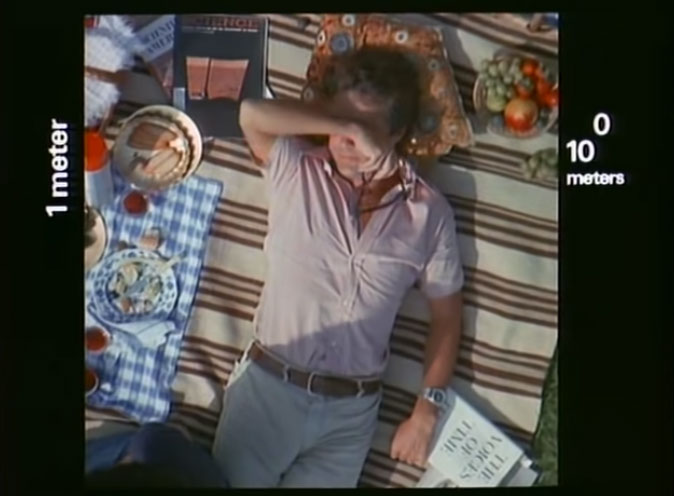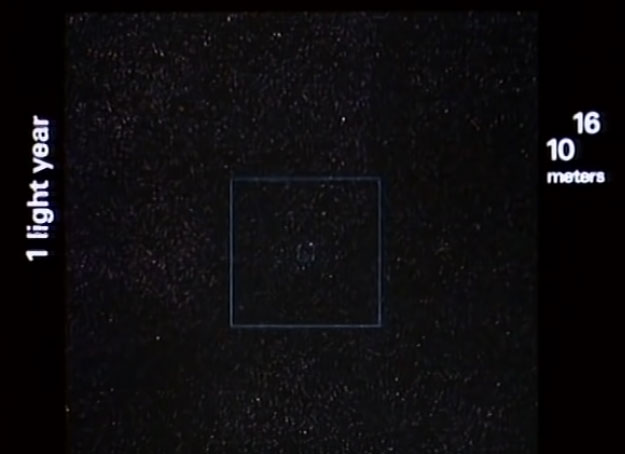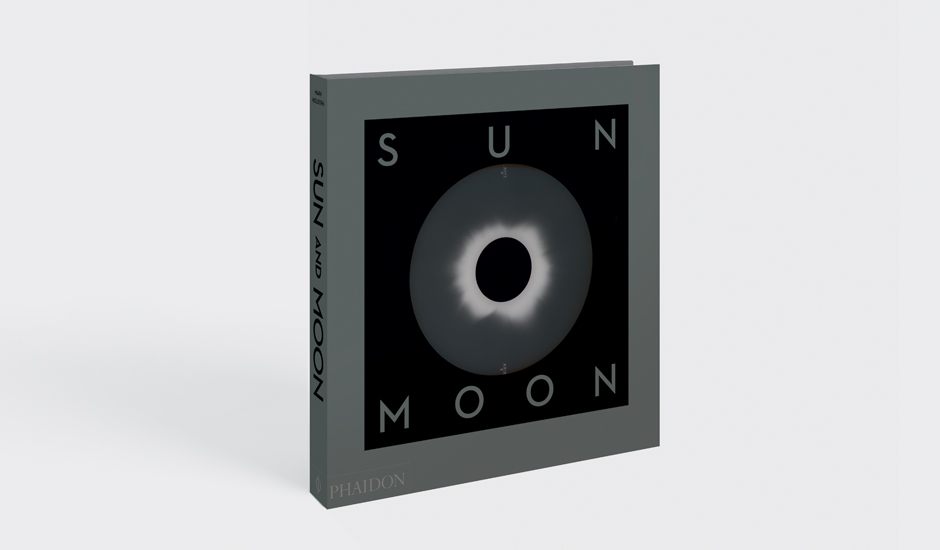
Charles and Ray Eames’s positive cosmic vibes
On the anniversary of Charles's birth here's how their Powers of Ten film helped change our view of a scary universe
Mark Holborn’s new book Sun and Moon is subtitled A Story of Astronomy, Photography and Cartography, and rather than offering a simple history of those interlinked visual disciplines, he looks at how man’s view and understanding of the heavens have altered life on the ground.
Most of the inclusions come from professional star-gazers, space agencies and astronauts, but the American designer, architect and filmmaker Charles Eames – who was born today, June 17 in 1907, also features in the book.
For a long time, the regular course of the stars and planets led many of the brightest minds on earth to assume celestial objects were locked, alongside earth, in a stable universe. However, in the 20th century, physicists such as Albert Einstein and astronomers such as Edwin Hubble, discarded this model with its implied constancy, and instead recognized the cosmos as expanding and unstable.

This new sense of cosmic uncertainty came at a bad time. “The enormity of the revolution implicit in both Hubble and Einstein’s conclusions was overshadowed by the rise of the Nazis and fascism in Europe,” writes Holborn. “By 1945 and the cessation of global hostilities, the events at Hiroshima and Nagasaki heralded a new era on planet Earth. The application of atomic science in a destructive capacity became the backdrop of the post-war division between the Western and Soviet powers. Behind the political reconfiguration of Europe lay the ineradicable fact of the deaths of six million in the camps. How could an artist make art, a composer write music, a writer produce literature or a scientist embrace the new cosmological perspective with a continent in ruins and the ever-present possibility of annihilation?”
The answer to this crisis, in Holborn’s view, came not from another scientist, astronomer, author or playwright, but, from a couple more closely associated with the world of interiors, rather than outer space.
“From his Santa Monica home, Case Study House #8, looking out over the Pacific towards Asia, Charles Eames and his wife Ray moved from architecture to every aspect of design, using exhibition installation, multiple-screen presentation and film as a means with which to embrace a wholly integrated consciousness, marked not by angst but optimism,” writes Holborn.

And it was that high-minded optimism that the Eameses projected outwards in their 1977 film, Powers of Ten. This nine-minute short, developed for IBM, “connected the cosmic to the microscopic on a common continuum in the passage of a few minutes.”
“Powers of Ten provided the link between the world of particles within atomic structure and the furthest reaches beyond the Milky Way, enabling the galaxy to be visible in its entirety as a spiral form,” explains Holborn. “The accommodation of ideas stretched from the realm of particle physics, to which Einstein’s theory of special relativity was applied, to space beyond our own galaxy, which Hubble had revealed in 1923 and Einstein’s ideas re-affirmed.
“The film places its grounded human couple on the grass of a Chicago park. The film zooms out at the rate of the power of ten every ten seconds, finally reaching the limits of the observable universe at 100 million light years,” explains Holborn. “It zooms back to the park at an accelerated rate of a power of ten every two seconds, then resumes its original velocity applied to negative powers of ten until it reaches, via the flesh of the man, the quarks, the particles in a proton within a carbon atom, at 10-16.”
The film was narrated by Philip Morrison, – “a scientist who had been employed on the Manhattan Project and had worked on assembling the first atomic bomb” notes Holborn - yet the movie, which splits the atom in a very different way, manages to introduce a sense of peaceful wonder in this view of both the cosmic and the microscopic. The shimmering subatomic particles and whirling galaxies might not be part of the ordered, orderly world as some understood it decades earlier, but, thanks to the Eameses vision, that new, uncertain universe could be still be filled with hope.

For a deeper understanding of the changing view of the heavens, buy a copy of Sun and Moon here; For more on Charles and Ray Eames’s work take a look at our Herman Miller book.